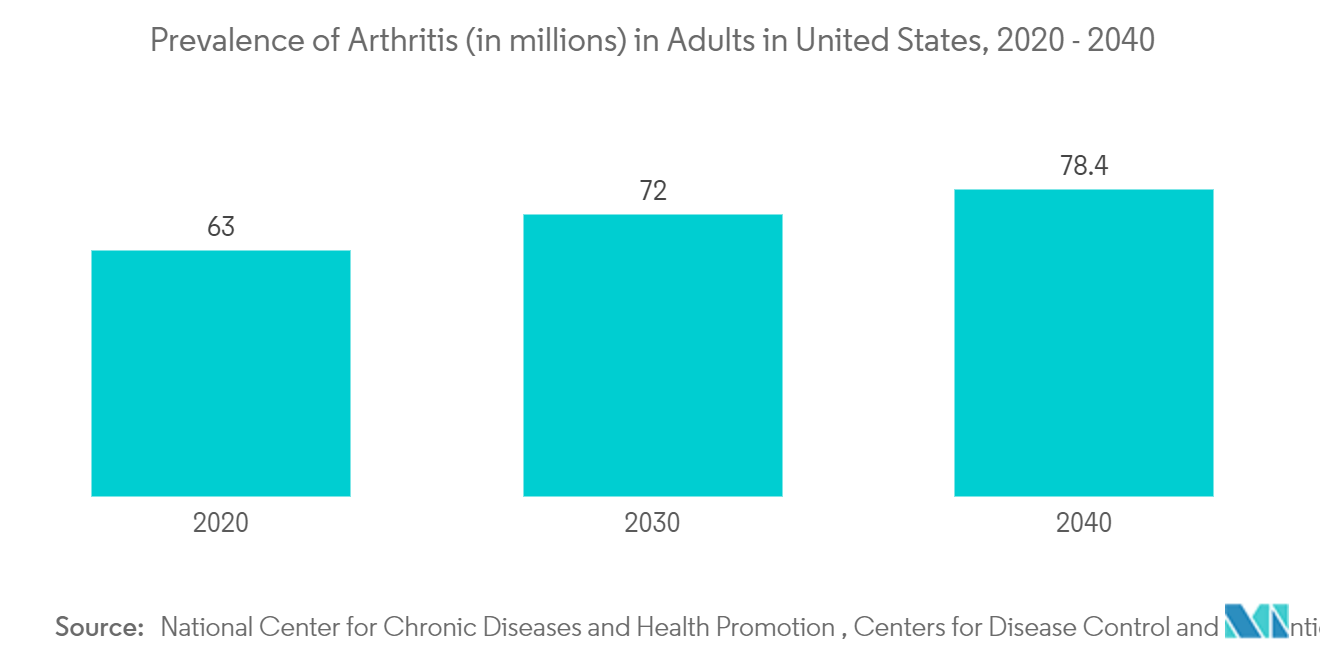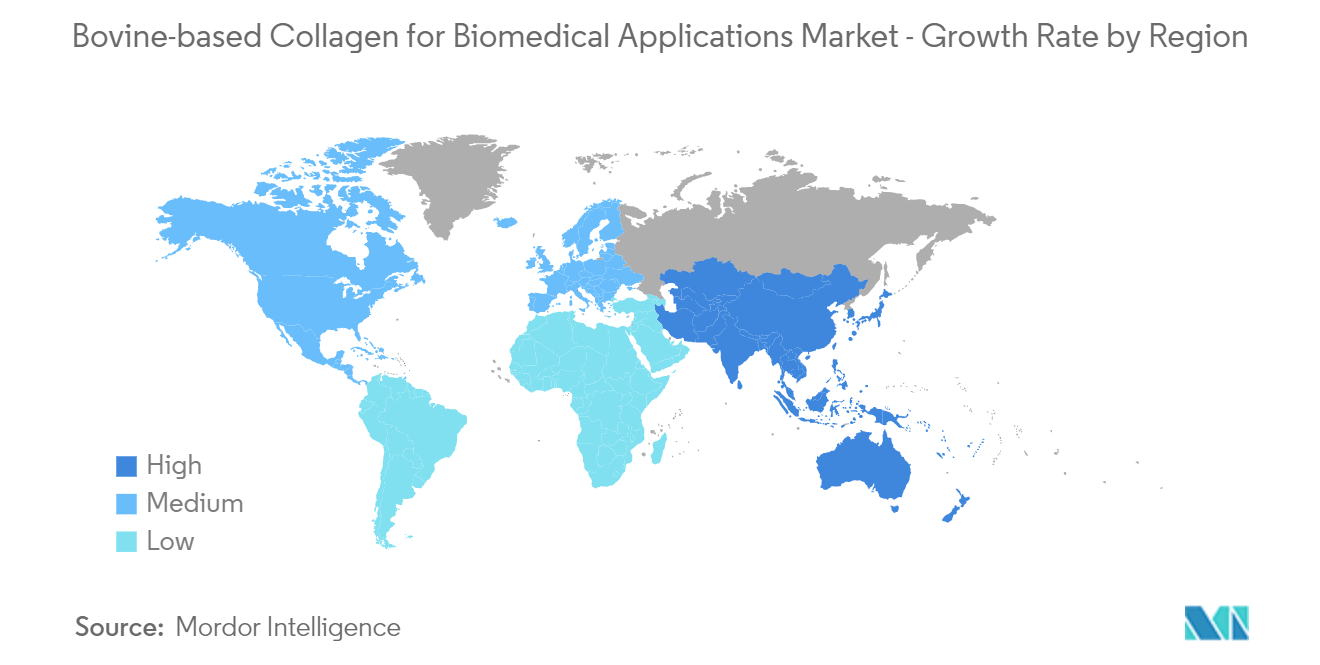Market Trends of Global Bovine-based Collagen for Biomedical Applications Industry
This section covers the major market trends shaping the Biomedical Applications Market according to our research experts:
Bone-graft Substitute Segment is Expected To Hold a Significant Market Share Over The Forecast Period
A bone substitute can be defined as a synthetic, inorganic, or biologically organic combination that can be inserted for the treatment of a bone defect instead of autogenous or allogenous bone. Bone is mainly made of collagen and carbonate-substituted hydroxyapatite. An implant manufactured from such components is likely to behave better. The ductile properties of collagen help to increase the poor fracture toughness of hydroxyapatites.
The factors boosting segment growth are the increasing prevalence of bone-related diseases like osteoporosis and arthritis. For instance, as per an article published in the International Journal of Environmental Research and Public Health in March 2022, in postmenopausal women in Punjab (India), osteoporosis and osteopenia were found to be present at prevalence rates of 30,50% and 44,20%, respectively. Higher systolic blood pressure, triglyceride levels, poor sleep hygiene, and C-reactive protein levels were found to independently influence the risk of osteoporosis and osteopenia in both univariable and multivariable regression analyses.
Moreover, according to the Juvenile Arthritis Foundation Australia 2022 report, juvenile arthritis is estimated to affect 6,000 to 10,000 Australian children aged 1-16 years, making it as common as childhood diabetes and epilepsy. Also, as per the Arthritis Foundation 2022 report, nearly 300,000 children in the United States have juvenile arthritis. 36% of the surveyed children reported having severe discomfort that significantly limited their daily activities. Many pediatric patients affected by arthritis require procedures to relieve the pain, which is expected to propel the growth of the bone-graft substitute segment during the forecast period.
The aging of populations worldwide will be responsible for a major increase in the incidence of osteoporosis in postmenopausal women and indirectly boost the market growth. Therefore, the above-mentioned factors are expected to drive the market growth of the segment.

North America is Expected to Hold a Significant Market Share Over The Forecast Period
North America is expected to hold a significant share of the market during the forecast period owing to factors such as the rising incidence of bone-related disorders, the growing geriatric population, better healthcare infrastructure, awareness among people and healthcare industry stakeholders about available technologies, and the high concentration of market players in the region.
According to Statistics Canada's August 2022 update, 657,900 people aged 35 to 49 years, 2,042,100 people aged 50 to 64 years, and 3,138,500 people aged 65 and above had arthritis in 2021. Thus, the increasing prevalence of bone-related diseases like osteoporosis and arthritis in the region is expected to drive the market in the region during the forecast period.
The high prevalence of chronic and acute wounds in the region is also estimated to propel the research studies to develop wound healing and regenerative medicines that use bovine-based collagen and therefore augment the region's growth. For instance, as per Mission Regional Medical Center's 2022 update, it is estimated that 6.7 million people currently live with chronic wounds, and that number is expected to grow by more than 2% in the next decade. Chronic wounds cost the healthcare system more than USD 50 billion each year. In the United States, more than 29 million people (9.5% of the population) have diabetes, and nearly two million of those people are likely to develop a diabetic foot ulcer or another non-healing wound each year. Collagen dressings such as sheets, pads, and gels are usually derived from bovine or porcine collagen. Thus, the high prevalence of wounds is expected to propel the market growth.
Therefore, the factors such as the high prevalence of osteoporosis, arthritis, and chronic and diabetic wounds are expected to drive market growth in the region during the forecast period.


